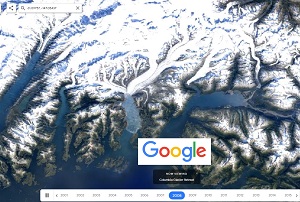Google has just added a new functionality to its Google Earth platform that shows how the world has changed over the last 37 years. The tool is called Timelapse and allows us to see the Earth from another perspective, one that shows us the changes it has experienced due to natural or human actions. A very useful tool for working on climate change in the classroom.
“Now anyone can see how time has passed by places around the world and witness almost four decades of changes at the planetary level,” says Google.

You can use this interesting application in your class to investigate with your students how the planet is changing. For example, how does a Glacier recede? In this app you can see how the Columbia Glacier in Alaska has receded. Work with your students on the impact of these changes through the challenge “TORE AND THE VILLAGE ON THIN ICE” that you can find in the AT HOME section.
Ask yourself other questions and see how it changes:
- How has Las Vegas grown? and your municipality?
- You can see how new neighborhoods appear in your municipality, search by name and see how it has changed in the last 37 years.
- Deforestation? With this tool you can see the sad loss of forested areas. Amazon forests are a source of great biodiversity, work on this topic with your students with the resource “NATURAL DIVERSITY”
- How does a sea dry up? Impressive images of how the Aran Sea dries up. What does this change mean for the ecosystem? Work on ecosystems with the Reflection “THE ECOSYSTEMS OF THE WORLD” in the section AT HOME
With it you can work on ecosystems, demographic evolution, agriculture, climate and its changes, etc. Surely you will find many interesting things both near where you live and in the confines of the planet.
